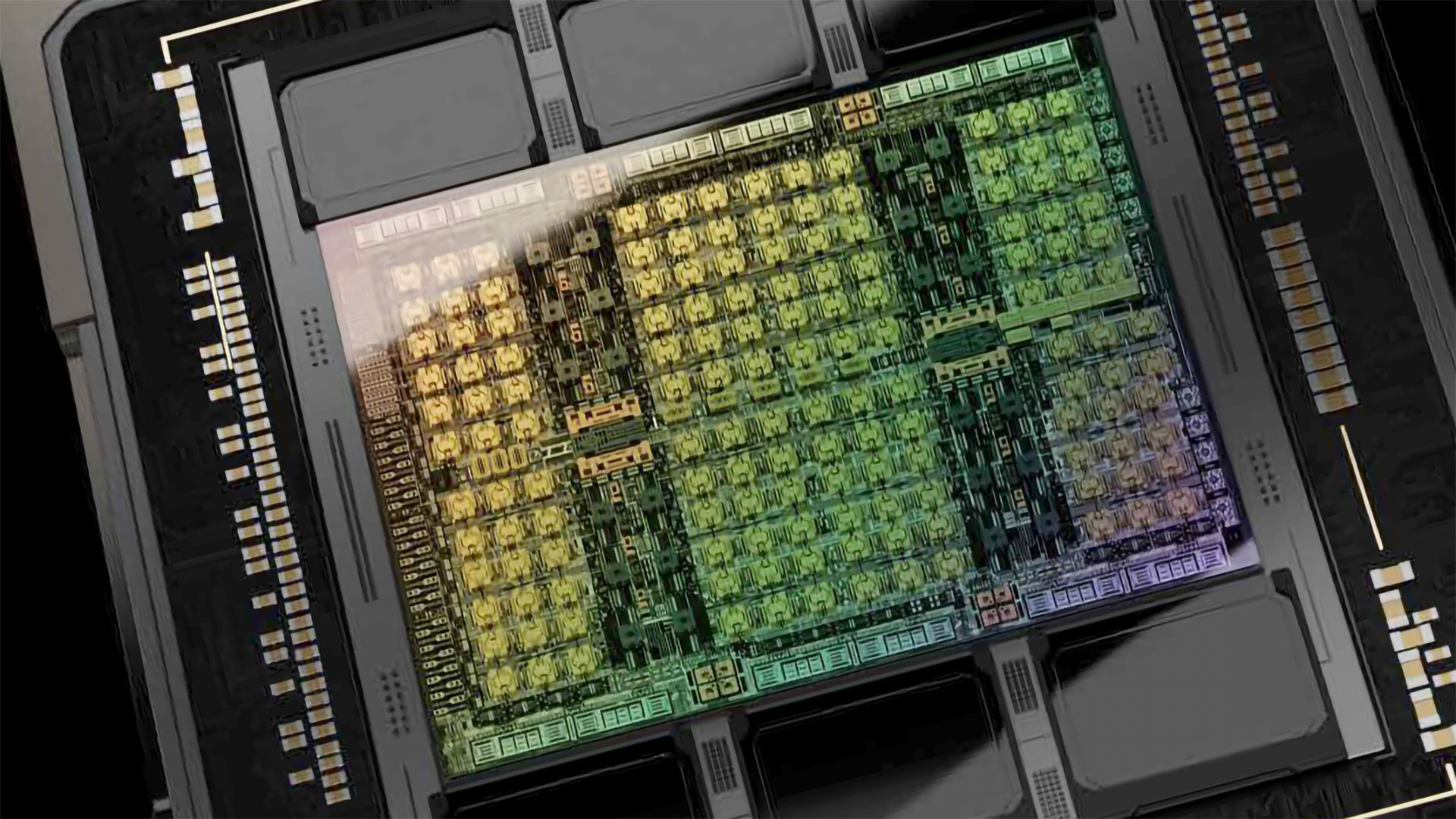New Nvidia AI GPUs designed to get around U.S. export bans come to China — H20, L20, and L2 to fill void left by restricted models
Surely this one will stick.

Nvidia is attempting yet another GPU for China that's compliant with the U.S. government's export restrictions, which banned many of of the company's chips. The Hopper-based H20 has finally arrived to fill the gap left by the now-disallowed H800, restoring availability for Nvidia datacenter GPUs in China once more, Reuters reports. Additionally, Lovelace-powered L20 and L2 GPUs are listed on at least one retail website, signaling that they're on the way as well.
The H20, L20, and L2 are Nvidia's second round of GPUs designed to be compliant with U.S. government sanctions on China. The company was already supposed to be in the clear with models like the A800 and H800 that featured cut-down specifications from the original A100 and H100. However, late last year an amendment to the export rules banned all of Nvidia's China-exclusive datacenter GPUs, forcing Nvidia to make another set of cards that were compliant with the law.
Rumors suggested Nvidia intended to launch these three GPUs back in 2023, but the cards are only launching now due to delays. The H20 will apparently only be available in "small batches" until greater availability happens sometime in the second quarter. Though Reuters wasn't able to verify if the L20 and L2 are releasing alongside the H20 or if they're even further delayed, we were able to find listings for all three GPUs on Vipera. The listings include detailed specifications (which align with previous rumors) and marketing, though Vipera says the cards are only "coming soon."
| Row 0 - Cell 0 | HGX H20 | L20 PCIe | L2 PCIe |
| Architecture | Hopper | Ada Lovelace | Ada Lovelace |
| Memory | 96 GB HBM3 | 48 GB GDDR6 w/ ECC | 24 GB GDDR6 w/ ECC |
| Memory Bandwidth | 4.0 TB/s | 864 GB/s | 300 GB/s |
| INT8 I FP8 Tensor | 296 I 296 TFLOPS | 239 I 239 TFLOPS | 193 I 193 TFLOPS |
| BF16 I FP16 Tensor | 148 I 148 TFLOPS | 119.5 I 119,5 TFLOPS | 96.5 I 96.5 TFLOPS |
| TF32 Tensor | 74 TFLOPS | 59.8 TFLOPS | 48.3 TFLOPS |
| FP32 | 44 TFLOPS | 59.8 TFLOPS | 24.1 TFLOPS |
| FP64 | 1 TFLOPS | N/A | N/A |
| RT Core | N/A | Yes | Yes |
| MIG | Up to 7 MIG | Yes | Yes |
| L2 Cache | 60 MB | 96 MB | 36 MB |
| Media Engine | 7 NVDEC, 7 NVJPEG | 3 NVENC (+AV1), 3 NVDEC, 4 NVJPEG | 2 NVENC (AVI), 4 NVDEC, 4 NVJPEG |
| Power | 400W | 275W | TBD |
| Form Factor | 8-way HGX | 2-slot FHFL | 1-slot LP |
| Interface | PCIe Gen5 x16: 128 GB/s | PCle Gen4 x16: 64 GB/s | PCle Gen4 x16: 64 GB/s |
| NVLink | 900 GB/s | N/A | N/A |
U.S. sanctions have become increasingly problematic for Nvidia's datacenter GPU business in China. The most immediate problem is the disruption caused from the banning of GPUs; Nvidia was effectively absent from the high-end for about four months after the most recent wave of restrictions. Concerns over potential bans in the future will probably have an effect on Nvidia's sales as well.
The bigger long-term issue for Nvidia however is how it can compete with Chinese rivals, which are subject to no such restrictions in China. According to Reuters, Nvidia had more than 90% market share before sanctions hit China, but the company could lose much of that. The H20 is such a massive downgrade from the H100 and the H800 that Huawei's Ascend 910B is actually surprisingly competitive. The 910B apparently has better FP32 performance than the H20, but a slower interconnect bandwidth, per the Reuters report.
Additionally, Nvidia is also selling the H20 for less than the 910B, with the H20 seeing availability from $12,000 to $15,000, while the 910B is apparently going for about $17,000. Octuple-GPU servers using the H20 are going for $200,000, down from the $280,000 Nvidia could get for an H800 server.
Ultimately, the very same export rules that are intended to limit China's access to cutting-edge technology have made it much harder for Nvidia and others to compete in China. Should the U.S. add further restrictions to GPU exports, it could force Nvidia out of first place.
Get Tom's Hardware's best news and in-depth reviews, straight to your inbox.

Matthew Connatser is a freelancing writer for Tom's Hardware US. He writes articles about CPUs, GPUs, SSDs, and computers in general.
-
Pierce2623 Ok, now let’s ban these too. If China wants to take over the world, force them to do so on their own technology. Don’t give them the tools.Reply -
samopa Nvidia can sell a H100 with only 10% core enabled to comply with the rules, at 110% price of normal H100, but it can *cough* hackable *cough* to enable all core.Reply
I bet that many Chinese AI company will happily pay the 10% price premium ;)